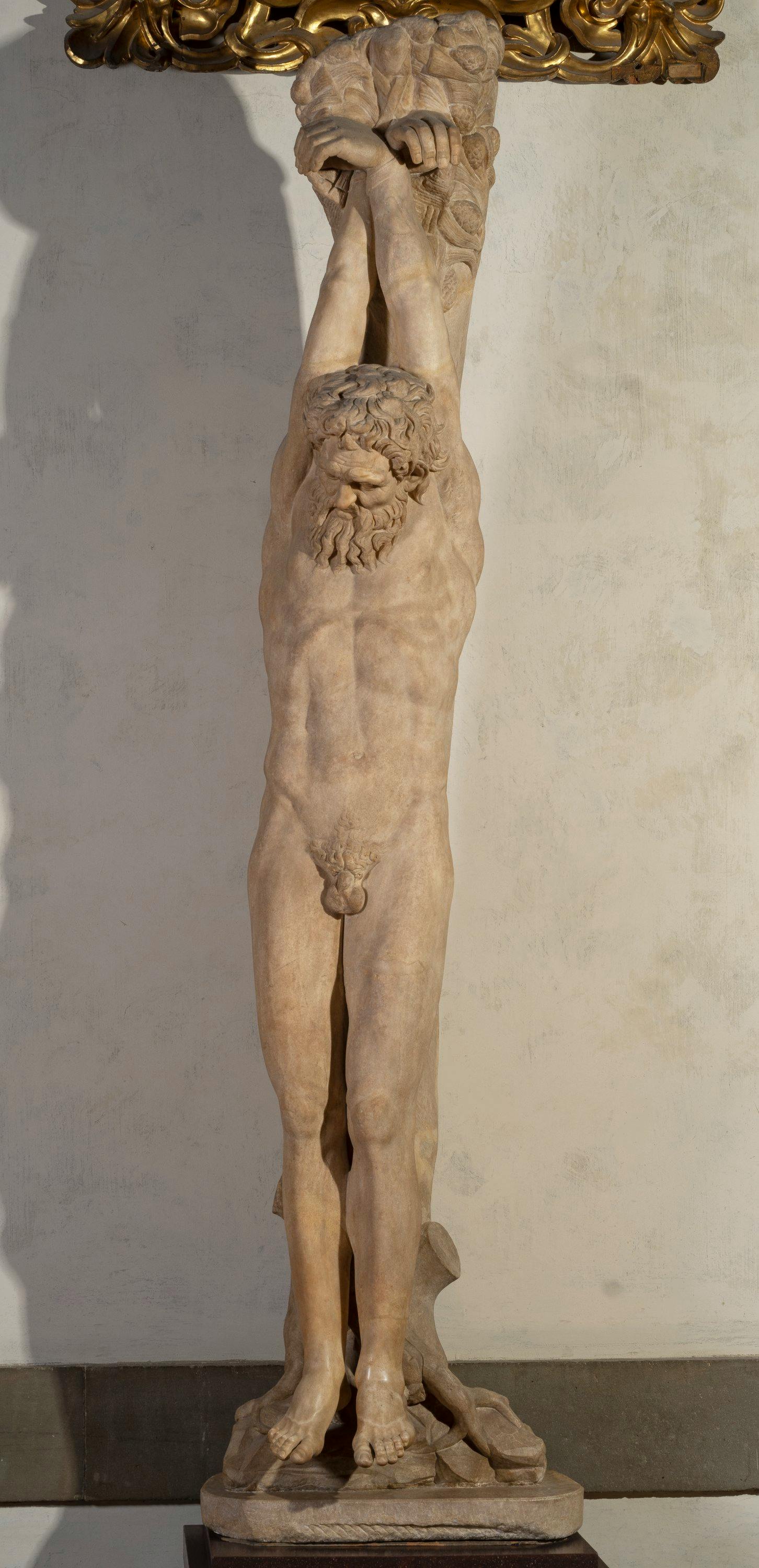Statue of Hanging Marsyas, white type
Roman Art
The myth of Marsyas tells how the Phrygian satyr, after accidentally finding the double flute (diaulòs) invented by the goddess Athena, became so skilled at playing it that he challenged the god of music Apollo to a musical competition, being defeated. This episode of the myth had great fortune in Roman times, also thanks to Ovid's account in his Metamorphoses (Ovid, VI, vv. 382 - 400).
The statue depicts the moment when Marsyas is awaiting his punishment after daring to defy the god: the Silenus, while hanging by the wrists from a log, is about to be skinned alive by the god and abandons his body under his own weight. Note the expression full of melancholy and resignation to one's sad fate, which is accentuated by the deep wrinkles on the forehead and by the half-closed mouth.
The work preserved at the Uffizi belongs to the group of white replicas, which is distinguished from the red type by a simpler and more classicist style. This definition was later abandoned in favour of a division between symmetrical and asymmetrical type, the former being associated with the white type and also with this Marsyas, which has the wrists crossed above the head and the body arranged along a single axis, thus creating a layout that gives the protagonist a static and resigned appearance.
The arms - in the section between the elbows and wrists - part of the left hand, the fingers of the right hand, the nose, the left eyebrow, half of the right leg and the left ankle, including the two feet, are the product of restoration works carried out in modern times. In the same way, also the lower part of the trunk and its roots, as well as the base and probably also the upper portion of the trunk, are the result of restoration. In addition, some chipping is present along the front of the hair and the beard of the Silenus, and the statue also appears to have been aggressively polished, so that some minor details were lost.
The exact provenance of this sculpture is unknown, but in 1550 it was portrayed - before undergoing restoration - among the pieces of the Capranica collection that at the time were preserved in Palazzo Valle in Rome. In 1584, the work was sold, together with the rest of the collection, to Cardinal Ferdinando de' Medici. Subsequently, the limbs were added to the statue, which was then moved to the Gallery of Villa Medici. In the 18th century, it was moved to the first room of the apartment overlooking Piazza del Popolo before being transferred to the Gallery. During this period, the work enjoyed a certain fame, with various casts and copies being made. In 1780, the white Marsyas left Rome for the Uffizi Galleries in Florence, together with a substantial nucleus of sculptures including the Niobids group. Here it was exhibited in the Western Corridor (today the Third Corridor, where it is still located: inv. 1784, no. 28) in opposition to the Red Marsyas. Due to the workmanship of the surface and on the basis of comparisons with other sculptures of the same subject, the White Marsyas of the Uffizi can be dated between the end of the Trajan era (98 - 117 A.D.) and the beginning of the Hadrian era (118 - 138 A.D.).
A. Weis, The hanging Marsyas and its copies. Roman innovations in a Hellenistic sculptural tradition, Roma, pp. 35 – 36, 1992a ; A. Cecchi, C. Gasparri, La Villa Médicis, IV: Le collezioni del cardinale Ferdinando I. I dipinti e le sculture, p. 148, Roma, 2009, p. 148; M. Rodinò, 4. Statua di Marsia appeso, del tipo bianco in Divina Simulacra. Capolavori di scultura classica della Galleria degli Uffizi, catalogo della mostra (Firenze, Gallerie degli Uffizi, 12 dicembre 2023 – 30 giugno 2024), a cura di F. Paolucci, Livorno, 2023, pp. 34-37 e bibliografia precedente
Statue of Marsyas, red or asymmetrical type
Roman Art
